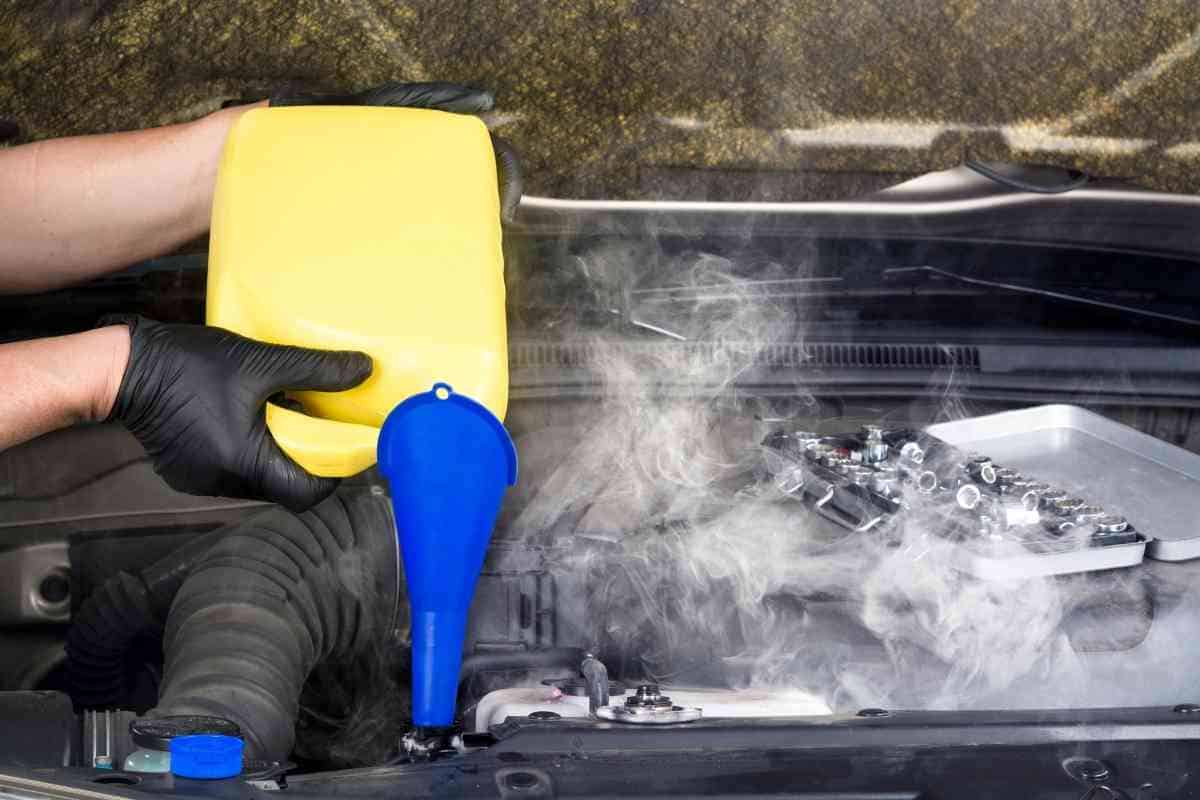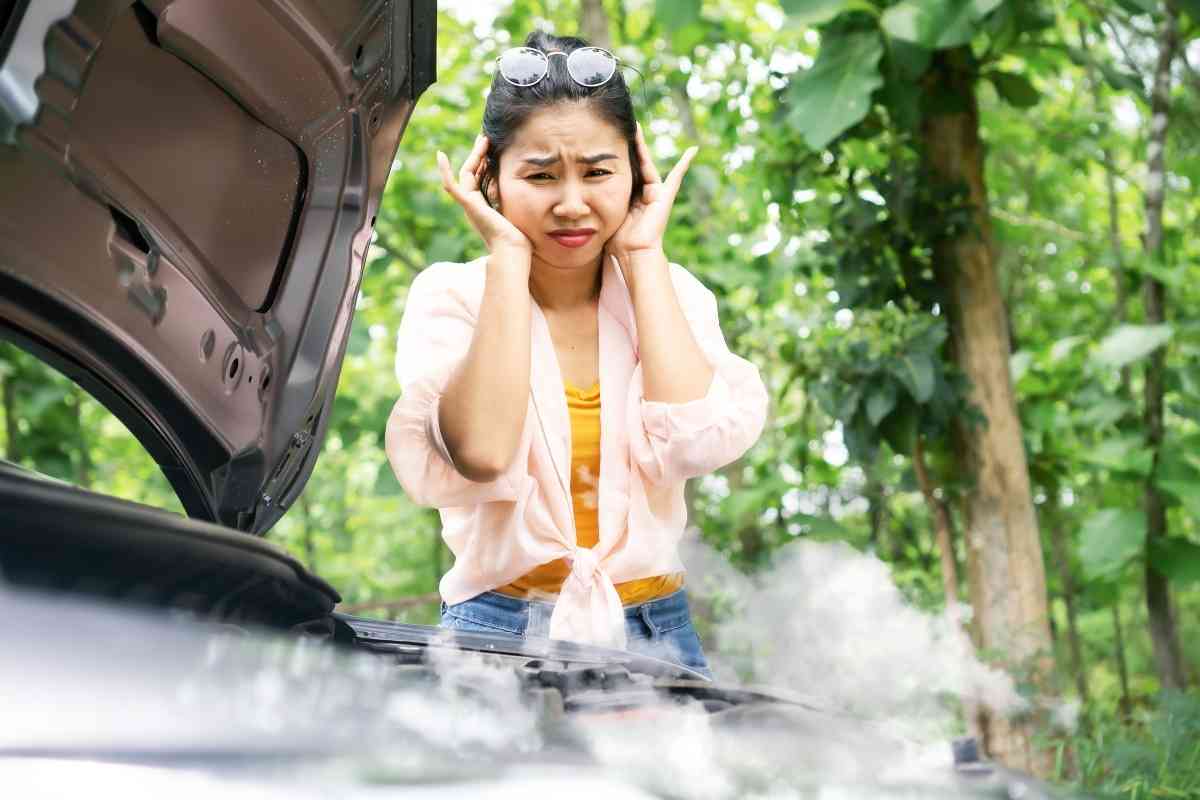4 Reasons Why Your Dodge Durango Is Overheating (EASY WAYS TO CHECK!)
Facing overheating issues with your Dodge Durango? Here are 4 Reasons Why Your Dodge Durango Is Overheating.
Our article dives into the common causes and offers insights to address this critical problem, ensuring your vehicle runs smoothly and safely.
If your Dodge Durango is running hot, you need to address the issue as quickly as possible and fix it, but what is causing it to overheat?
Much like with any vehicle, you can expect your Dodge Durango to run into some mechanical problems from time to time – with overheating being particularly common. With that said, there could be any number of things causing your Dodge Durango to overheat, and you need to run some diagnostics to figure out why your vehicle is running hot.

Your Dodge Durango is most likely overheating due to a coolant/anti-freeze leak, a broken water pump, a broken radiator fan, or a faulty or a broken/faulty thermostat. Symptoms of your Dodge Durango overheating include a switched-on temp gauge, bad odor, and smoke.
My Dodge Durango Is Overheating, why?
While there are plenty of reasons why a Dodge Durango is overheating, one main factor could be to a coolant/anti-freeze leak, a broken water pump, a broken radiator fan, or a faulty or a broken/faulty thermostat.
Overheating can be a very serious problem for your Dodge Durango. Depending on what is causing the issue, it could potentially result in a serious breakdown or a whole mess of other components getting damaged.
With that said, the temperature of your vehicle is regulated by a number of different parts in your Durango, and each one needs to be assessed to get to the bottom of the overheating.
The good news is, that if the problem has just started and you are taking immediate action, there is a good chance that you will be able to get your vehicle back in action without any catastrophic damage. To help you understand this further, we are going to take a closer look at why your Dodge Durango is overheating in more detail.
After extensively researching Dodge maintenance and repair forums, I have been able to gather enough information to determine why your Durango is overheating. My research has indicated that if your Dodge Durango is overheating, you should always identify the source of the problem and resolve it before you continue driving the vehicle.
Dodge Durango IS Overheating: Valuable Symptoms
If you are worried about your Dodge Durango overheating, you should be aware that there is a difference between your vehicle running a little hot and legitimately overheating. The temperature of a car will naturally start to increase the longer that you drive it, which is not necessarily something to be concerned about.
However, if you start to see actual signs of overheating, it means that there is something imminently wrong with your Durango and you need to hop on the fix right away. There are some key symptoms that are aligned with an overheated vehicle that you should watch out for.
Temperature GAUge (Switched On)
Every vehicle these days is designed to make noticing overheating as straightforward as possible, which is why manufacturers install temperature gauges into cars. Your Dodge Durango should have a gauge next to the speedometer that will light up if something is off.
If your Durango is in working order, then the gauge will stay off. On the other hand, if the light turns on, your vehicle may be overheating.

Bad Odor
When your Dodge Durango starts to overheat, one of the telltale signs is usually a bad odor coming from the vehicle. Once the temperature of the vehicle gets high enough, you will notice the smell of burning oil.
The smell of the burnt oil should not be coming from within your Dodge Durango but from the spilled oil and grease that has built up on the exterior of your engine. Depending on how bad the overheating is and how much oil is on the exterior of your engine, you can even see some smoke coming up.
In addition, you may also notice the smell of something sweet when your Durango is overheating. This would be from the coolant in your vehicle, which is made from ethylene glycol. This is a sign that your Dodge Durango is really in trouble, and you should stop driving the vehicle right away.
Smoke
Once you start seeing smoke coming from your vehicle, you will know for sure that your Dodge Durango is badly overheating. The color of the smoke is usually white, which is from the coolant reaching such a high temperature that it burns up and evaporates. You should see this smoke coming up from under the hood of your Durango.
Alternatively, you may have blown your head gasket. This will result in white smoke shooting out of your tailpipe.
A blown head gasket is generally an extreme sign of overheating, and it implies that you continued to drive your vehicle even after the initial symptoms had started. You can avoid blowing your head gasket by shutting down your vehicle when you notice overheating early on.
Reasons Why Your Dodge Durango is Overheating
Depending on the symptoms that you are seeing with your Dodge Durango, it will be much easier to pinpoint what is causing your vehicle to overheat. Specific symptoms are aligned with specific components of your Durango, which will help you find the best fix for the situation.
Broken/Faulty Thermostat
Before you start taking apart your Dodge Durango, make sure that all of the right signs for overheating are legitimately there. You would be shocked by how many people think their vehicle is overheating simply because the thermostat is old or faulty.
If you are seeing that your temperature gauge has switched on, check for other signs of overheating before you jump to conclusions. If there is no other indication that your Durango is running hot, you may just need to replace your thermostat.
Coolant/ Anti-Freeze Leak
Your vehicle’s coolant is essential for regulating your Durango’s temperature. Unlike oil which will slowly start to become less and less over time, your coolant is there to stay. However, if there is a coolant leak, then your Dodge Durango will not be able to adequately maintain a stable temperature.
The most common reason that coolant starts to leak is due to corrosion within the radiator. After years of use, the tubes will deteriorate and let in debris, which eventually results in a coolant leak.
Broken Water Pump
Your Dodge Durango’s water pump is responsible for moving water through the motor and back to the radiator. This ensures that your motor has a stable temperature, which is not affected by external conditions.
However, if your water pump is broken, it will not be able to regulate the temperature of your vehicle – resulting in overheating. Generally, the first indication of a bad water pump is a water leak or an odd clanking sound coming from your Durango.
With that said, if you notice a high-pitched sound while you are driving, then it could be a sign of a worn-out serpentine belt, which works together with your water pump.
Broken Radiator Fan
Your radiator fan is a key component for regulating your Dodge Durango’s temperature. When the radiator fan breaks, the blades will fail to spin, and the lack of airflow reaching your vehicle will cause overheating.
If it is legitimately broken, you should hear a noise coming from the radiator fan to indicate this. In addition, you will also find that your Dodge Durango’s air conditioning system does not work properly.
Depending on whether the radiator fan is completely broken or just poorly functioning, your vehicle will be pumping out little to no air conditioning.
Closing Thoughts On Why A Dodge Durango Is Overheating
As we wrap up our discussion on the common causes of overheating in Dodge Durangos, it’s evident that this issue, while serious, is often diagnosable and manageable. Key factors such as coolant leaks, faulty water pumps, broken radiator fans, and malfunctioning thermostats are highlighted as the primary culprits.
If your Dodge Durango is overheating, recognizing these signs early and addressing them promptly can prevent further damage to your Durango and ensure a safer driving experience.
Understanding the symptoms of overheating, such as the activation of the temperature gauge, the emergence of bad odors, and the appearance of smoke, is crucial for Dodge Durango owners.
These indicators provide early warnings and, when heeded, can minimize the risk of significant engine damage. Keeping an eye out for these signs and taking immediate action can save both time and money in the long run.
In conclusion, maintaining a Dodge Durango requires vigilance, especially regarding overheating issues. Regular checks and timely repairs of key components like thermostats, water pumps, and radiator fans are essential to the vehicle’s health.
By staying informed and proactive, owners can ensure their Durango remains a reliable and high-performing vehicle, ready for the road ahead.
